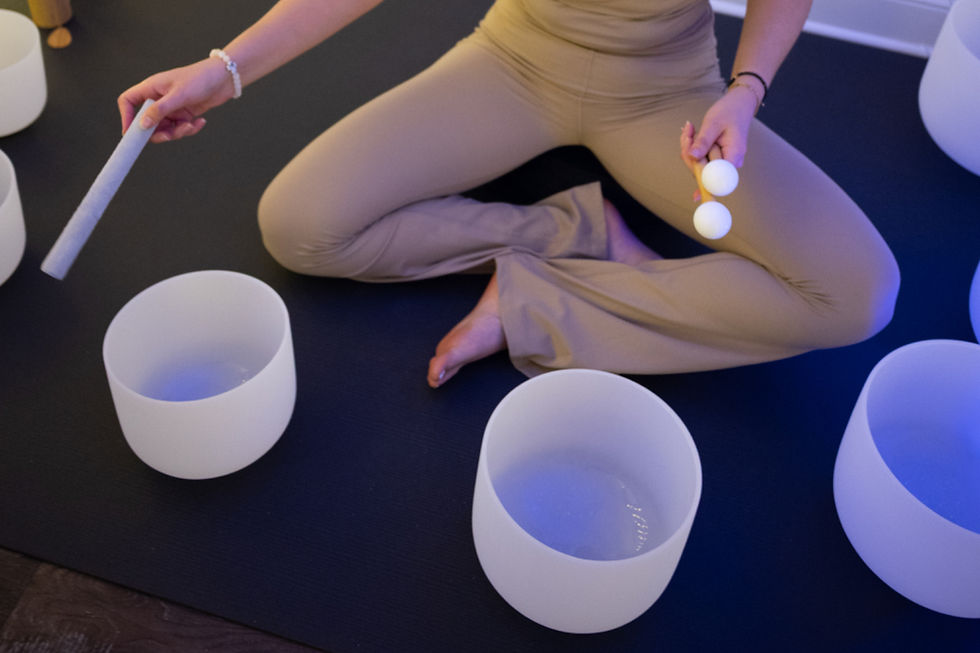Elevating Prenatal Yoga: Insights from Dr. Raya Williams at Edge Yoga School
- Michelle Rae Sobi

- Sep 30
- 4 min read

The world of yoga is full of opportunities, especially when it comes to prenatal practices. Recently, yoga teacher trainees at Edge Yoga School were fortunate to attend a presentation by Dr. Raya Williams, a well-respected authority in prenatal yoga. Her session was not just educational; it was inspiring and emphasized the critical role prenatal yoga plays for expectant mothers and their babies.
In this blog post, we will break down Dr. Williams' key points on the importance of prenatal yoga and how future yoga instructors can effectively integrate this knowledge into their teaching.

Understanding Prenatal Yoga
Prenatal yoga is specifically tailored for expectant mothers, offering poses and practices that are both safe and helpful during pregnancy. Dr. Williams stressed that prenatal yoga extends beyond physical exercise; it supports mental and emotional well-being too.
Many pregnant women face discomforts such as back pain, nausea, and fatigue. Studies show that around 50-70% of women experience lower back pain during pregnancy. Prenatal yoga helps alleviate these issues while promoting relaxation and stress relief, essential for both the mother and the developing baby.
Dr. Williams also pointed out that prenatal yoga can deepen the connection between mother and baby. By practicing mindful movements and breathwork, mothers can become more aware of their bodies and the changes they go through. This awareness promotes better emotional health, which can lead to a more positive pregnancy experience.

The Role of Breath in Prenatal Yoga
One significant theme in Dr. Williams' presentation was the essential role of breath in prenatal yoga. Breathwork, known as pranayama, becomes even more vital during pregnancy.
Dr. Williams explained various breathing techniques such as deep belly breathing, which can ease anxiety and promote relaxation. Research indicates that incorporating breathwork can lower the heart rate and reduce stress levels. Mothers using these techniques create a calming environment, not just for themselves but also for their babies.
Integrating breathwork into prenatal yoga classes empowers mothers to take charge of their emotional and physical states. Dr. Williams encouraged trainees to bring these techniques into their future classes for a more holistic approach to prenatal yoga.

Modifications and Safety Considerations
Safety is critical when practicing prenatal yoga. Dr. Williams highlighted the need to understand pregnant women's unique physical limitations. Each trimester brings different challenges; hence, yoga instructors should know how to modify poses appropriately.
For example, lying flat on the back is not advised after the first trimester. Dr. Williams demonstrated how to adapt typical poses to keep participants comfortable and safe in their practice. These modifications may include using props like blocks or adjusting the angle of poses.
It is equally important to create an open environment where mothers are encouraged to voice their concerns and ask questions. This openness builds trust and a sense of belonging among participants.
The Emotional Benefits of Prenatal Yoga
Dr. Williams also dove into the emotional benefits of prenatal yoga. Pregnancy is often a whirlwind of emotions, and yoga offers a space for mothers to navigate these feelings.
The practice of yoga promotes mindfulness, encouraging mothers to focus on the present and connect with their emotions. Dr. Williams shared real-life stories of mothers who found solace through prenatal yoga while grappling with anxiety and uncertainty.
Creating a supportive environment allows yoga instructors to help mothers feel empowered and confident. This emotional backing is crucial for overall well-being and can significantly impact the bond between mother and baby.

Integrating Prenatal Yoga into Teacher Training
Dr. Williams' presentation was a unique chance for the yoga teacher trainees at Edge Yoga School to learn how to incorporate prenatal yoga into their teaching. She urged them to seek further education in this expanding field where demand is growing rapidly.
Inspired, the trainees are now motivated to curate their own prenatal yoga classes that focus on the specific needs of expectant mothers. Dr. Williams provided resources and recommended further reading to enhance their understanding of prenatal yoga principles.
By weaving these concepts into their training, yoga instructors can offer mothers tailored support during this crucial time in their lives.

Final Thoughts
The session with Dr. Raya Williams was both enlightening and impactful for yoga teacher trainees at Edge Yoga School. Her insights into prenatal yoga demonstrated its significant effects on expectant mothers and their babies.
From grasping the importance of breath to implementing safety and emotional support, Dr. Williams equipped the trainees with vital tools to teach prenatal yoga effectively. As the need for prenatal yoga continues to rise, these lessons will significantly shape the future of yoga instruction.
Reflecting on the role of prenatal yoga, it is evident that this practice nurtures not just the body but also the mind and spirit during one of life’s most transformative phases. Our heartfelt thanks go to Dr. Raya Williams for sharing her knowledge and to Edge Yoga School for offering such a valuable experience.

With proper training and understanding, future yoga instructors can play a vital role in nurturing expectant mothers, ensuring they feel empowered and cared for on their journey to motherhood.



